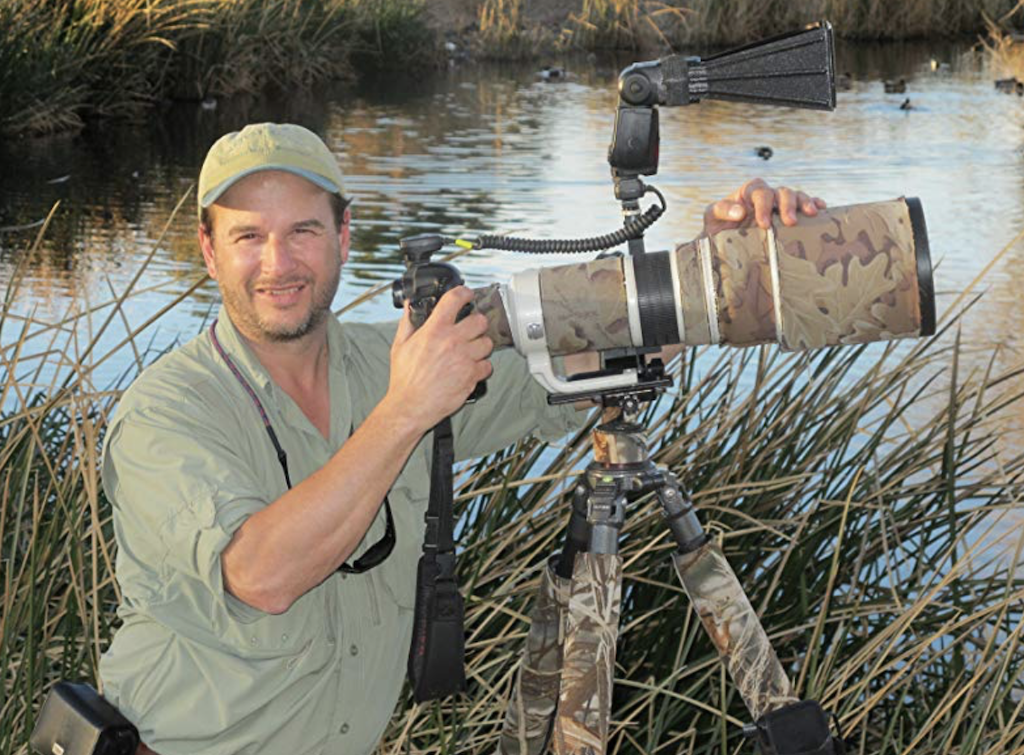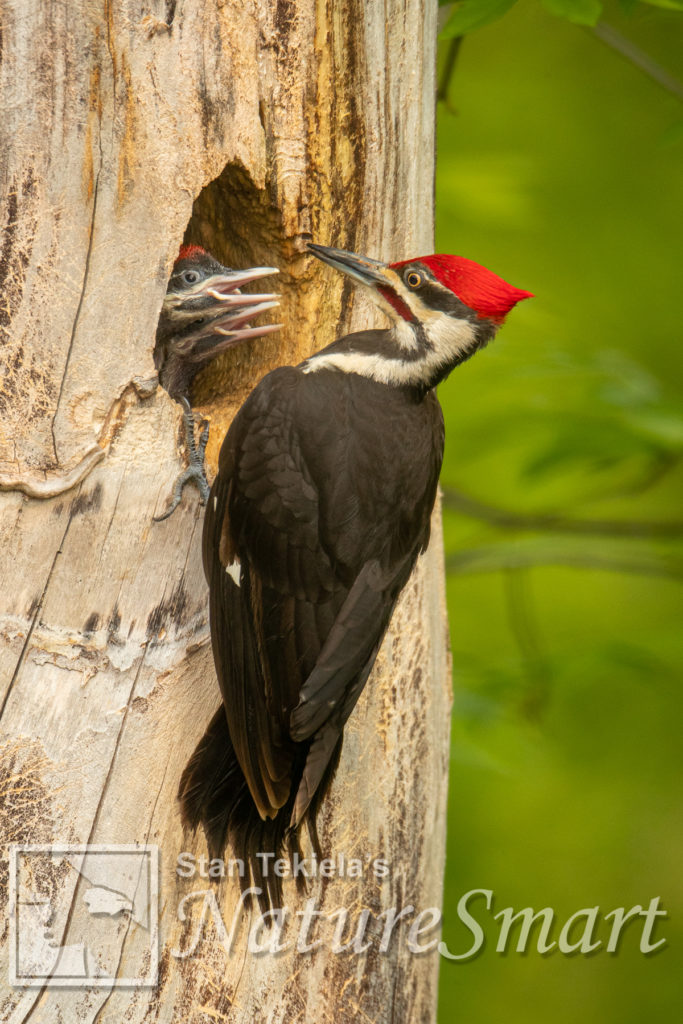Stan Tekiela Presents: The Pileated Woodpecker
There are only a handful of birds that elicit pure excitement and joy when they show up at your backyard feeding station. The Pileated Woodpecker (Dryocopus pileatus) is our largest woodpecker species in America and Canada. Some say it is the second largest woodpecker. It all depends upon if you believe the Ivory-billed Woodpecker exists or not.

The Pileated Woodpecker inhabits deciduous forests in and around the Great Lakes, New England, and as far south as Florida and other Gulf Coast states. The name “pileated” refers to the large shock of red feathers on its head, called a crest. The word pileatus is Latin and translates to “cap” or “hat,” which I believe describes the prominent crest very well.
They are very large birds standing nearly 20 inches tall and have a wingspan of 30 inches. Even though they look huge, they weigh only 11 oz. Males have a red mustache and red forehead, while females have a black mustache and forehead. Both show a large white patch on their wings when in flight.
A pair of Pileated Woodpeckers hold and defend a very large territory all year long. They are a non-migratory bird. During spring and summer, they work hard to keep out others of their kind. In fall and winter, they allow their children to hang around but soon pressure them into leaving. They are constantly patrolling their territory, which explains why you only see them visiting your feeder now and then.

These woodpeckers favor heavily wooded areas with large, mature hardwood trees. They are one of the few woodpecker species that is large enough and strong enough to excavate a nest cavity in a living tree.
However, they also nest in dead trees. Some studies show that they benefit from the removal of invasive woodland species such as honeysuckle and European Buckthorn.
Apparently, the removal of these invasive species helps them forage lower on trees and also on the ground. Either way, this is one more good reason to remove these invasive shrubs from your woodlot.
If you think you are seeing more Pileated Woodpeckers than you have in the past, then you are correct. From 1966 to 2015 the population of these woodpeckers increased on average 1.5 percent per year throughout their range. And it’s good to have more of these birds around. They eat large amounts of carpenter ants and other wood-boring insects that bring damage to trees.
They hunt for insects by excavating large oval holes in trees. Their feeding activity is often confused with nesting. The difference is, nest cavities are 5- or 6-inch oval openings, and feeding cavities can be upwards of several feet long. Even though they eat mainly insects they also consume fruits, berries, and nuts.
So I was thrilled when I was contacted by a reader of this column because she had a Pileated Woodpecker nesting in her yard. I immediately dropped everything to visit and take a look. Sure enough, a pair had excavated a nest cavity and was getting ready to lay eggs. Not long after that, the eggs would hatch and the fun would begin. The adults would dbring in food to the young about once or twice per hour.
On my last visit the young were just getting large enough to stick their heads out of the cavity when the adult visited for a feeding. The young aggressively begged for each meal. Adult Pileated Woodpeckers carry many insects in a pouch in their mouth and forcefully push the meal into the open mouths of the young. This is very funny to watch. I’ve been fortunate to be able to study and capture images of these amazing birds.
What is most interesting is that, after feeding the young, the adults enter the nesting cavity and collect up all the waste (fecal sacs) from the young and dispose of the waste far away from the nest cavity. This keeps the interior of the cavity clean and reduces the number of insect infestations.
If you have an interesting nesting bird in your yard, contact Stan Tekiela. He would love to hear from you.
If you enjoyed Stan’s post, you may consider one of his amazing nature books: Majestic Eagles, Wild Birds, or Backyard Birds: Welcomed Guests at our Gardens and Feeders. Young readers will delight in his award-winning children’s books, such as Whose Butt?, Critter Litter, and Jump, Little Wood Ducks.
You can follow Stan on Facebook and Twitter, or contact him via his web page. Stan’s nationally syndicated NatureSmart Column appears in more than 25 cities spanning 5 states (Minnesota, Wisconsin, Michigan, Illinois, and Pennsylvania) and is circulated to more than 750,000 readers.
For more stories about wildlife and nature, sign up for our newsletter now!
More posts from Stan:
Indigo Bunting—A Familiar Summer Visitor
The Nesting Behaviors of Sandhill Cranes
Big Birds, Baby Birds, Birds Everywhere
The Magical, Mystical World of Sandhill Cranes
For more stories about wildlife and nature, sign up for our newsletter now!


